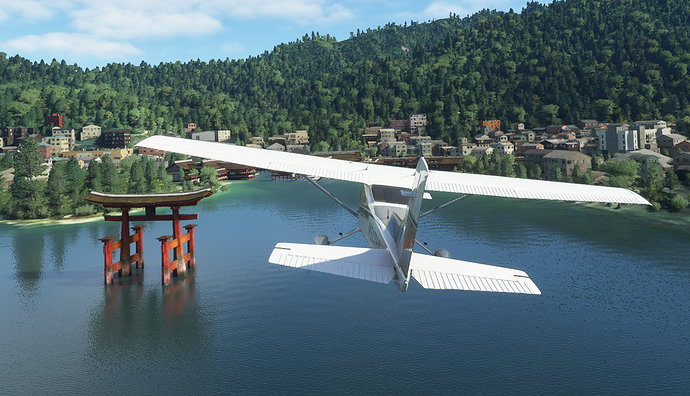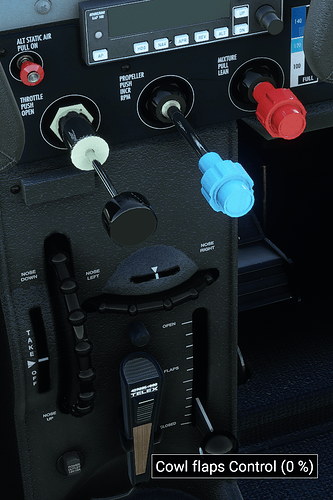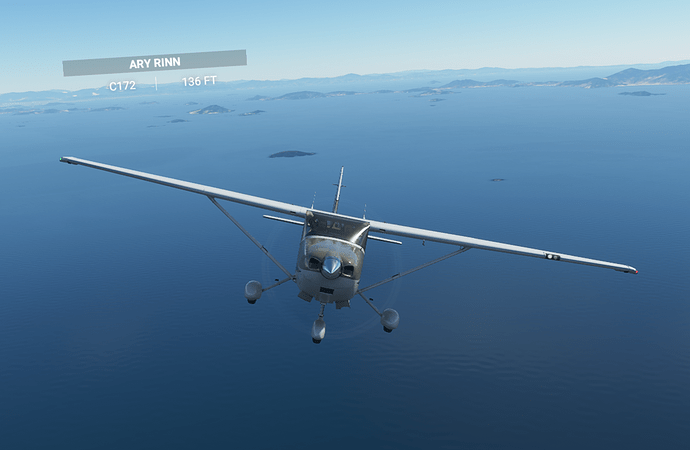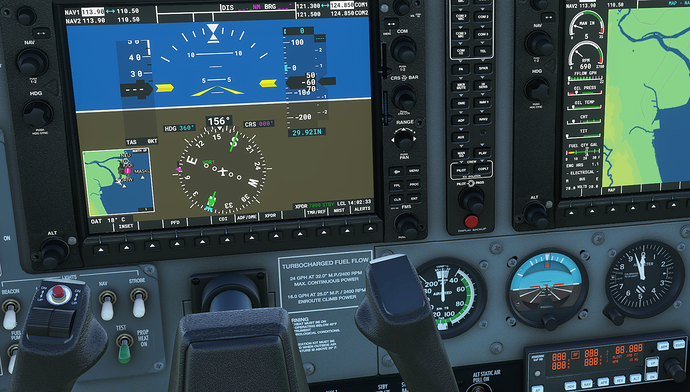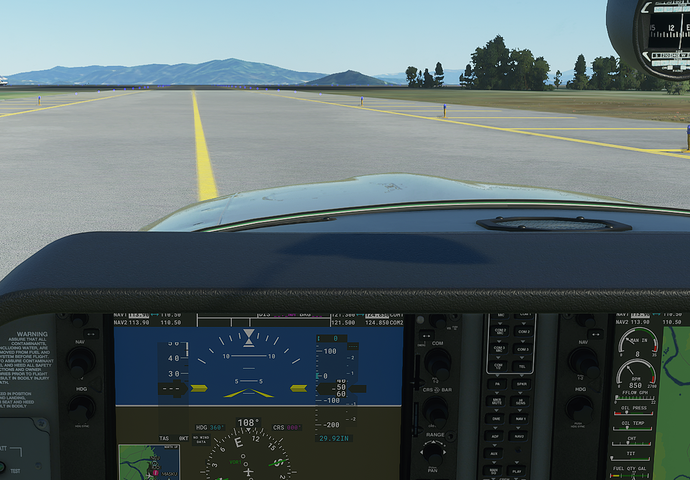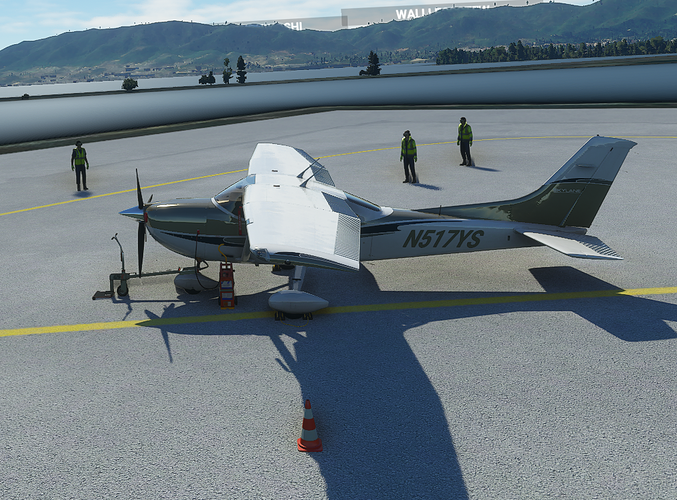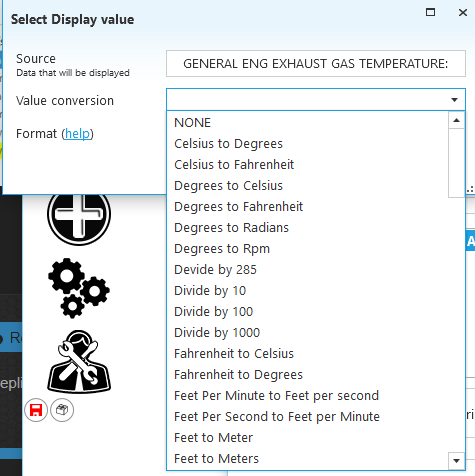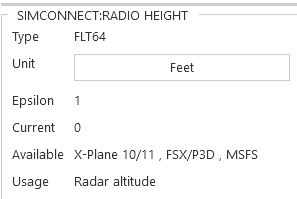I finally bought the Cessna 182 Skylane from the marketplace after it has been through a few updates. In this thread I am going to talk a little about the plane and post some screenshots.
The plane has:
- A Prop (blue) Lever
- Cowl Flaps
- Garmin G1000 without Synthetic Vision
- A unique-looking auto-pilot interface
The Cessna 182 looks and handles a lot like the Cessna 172, but it is larger and a bit more powerful. The power comes in handy when climbing. You can also control the RPM with the prop lever, which you cannot do on the Cessna 172. The 172 also does not have cowl flaps.
There does not appear to be a carburetor heat lever (according to the comments the real aircraft has no carburetor so this is correct). Pulling the Cowl Flaps lever up to the top will open the cowl flaps on the bottom of the exterior of the engine cowl.
Opening the cowl flaps is supposed to reduce the temperature of the engine, specifically the Cylinder Head Temperature (CHT). They should be opened while taxiing, takeoff, and climbing from what I understand. However, when flying around I did not notice any changes in temperatures, so I am not sure this is modelled properly. Also there is no Exhaust Gas Temperature (EGT) display (also the real aircraft would not have this).
The auto-pilot interface is the small device on the bottom right of the above image. It has red analogue numbers. It is relatively unique, and it is likely the reason behind the lack of synthetic vision in the Garmin flight display. I have heard you can activate the synthetic vision yourself with changes to the XML files, but I have not tried this myself.
By default you cannot see over the instrument panel while taxiing. You will need to press up on the hat switch to get a view over the top of the panel to see the taxiway. The hat switches all work properly as of the recent patches.
The aircraft can be displayed with various static elements while parked, using an iPad-like device on the pilot’s yoke.
Conclusion
The Mooney Ovation is definitely the better aircraft. Considering that they have the same price, if you had to pick one or the other, go with the Mooney Ovation 100%. The C182 is just too similar to other aircraft in the sim to be worth the price on it’s own.
That said, if you have the money, the C182 is not bad at all. Maybe if the price was reduced to $20 it would be worth it.
